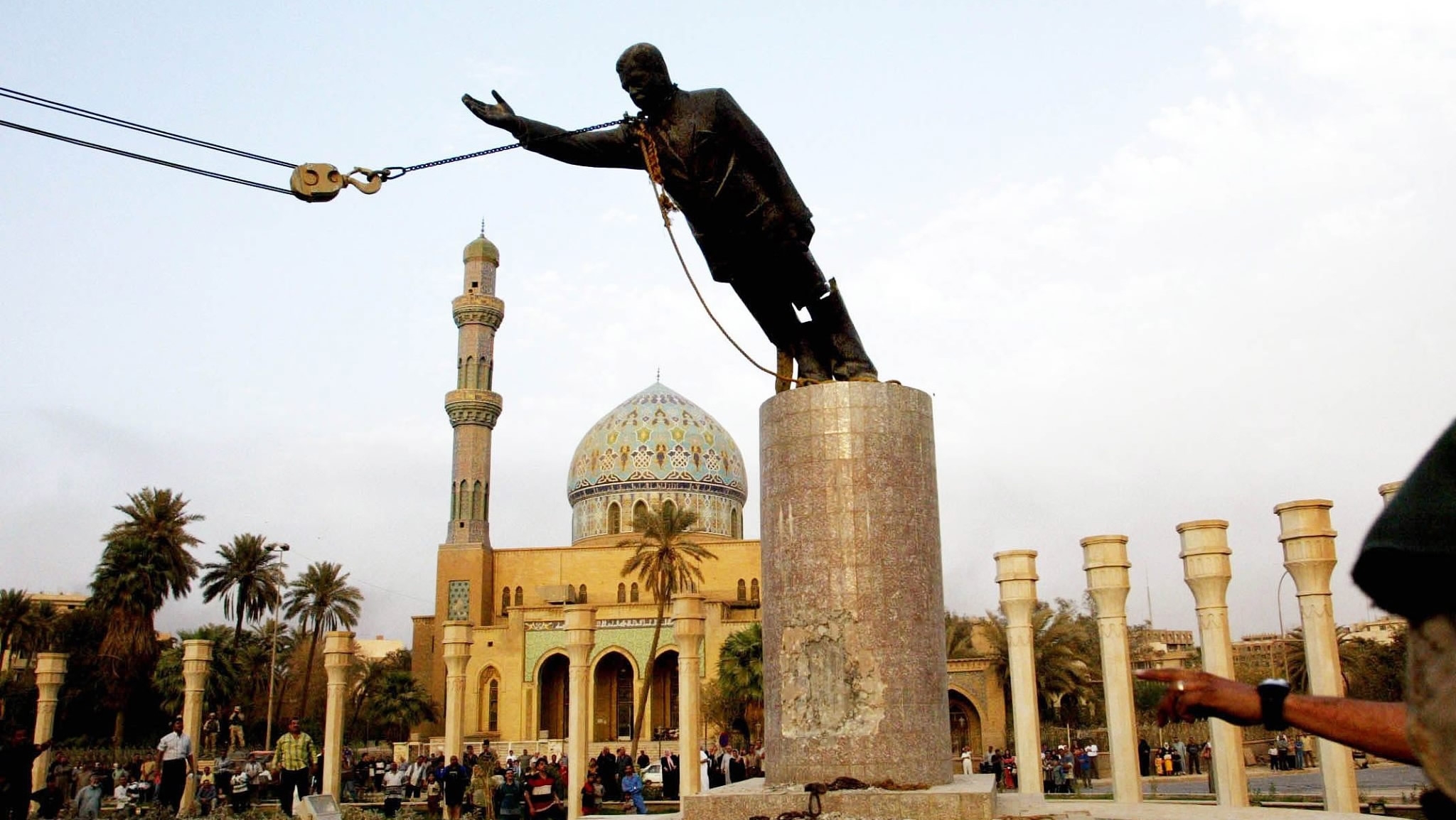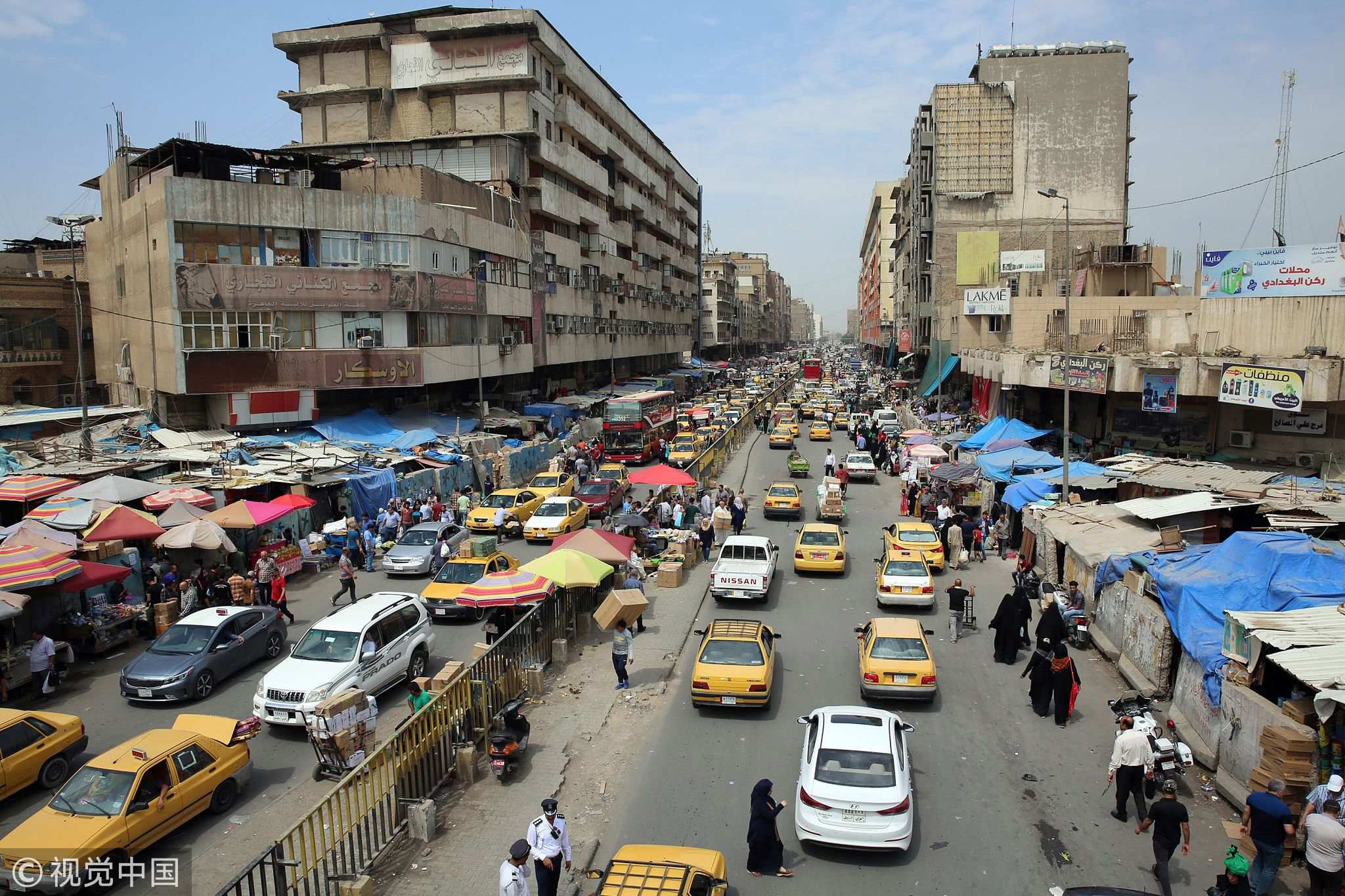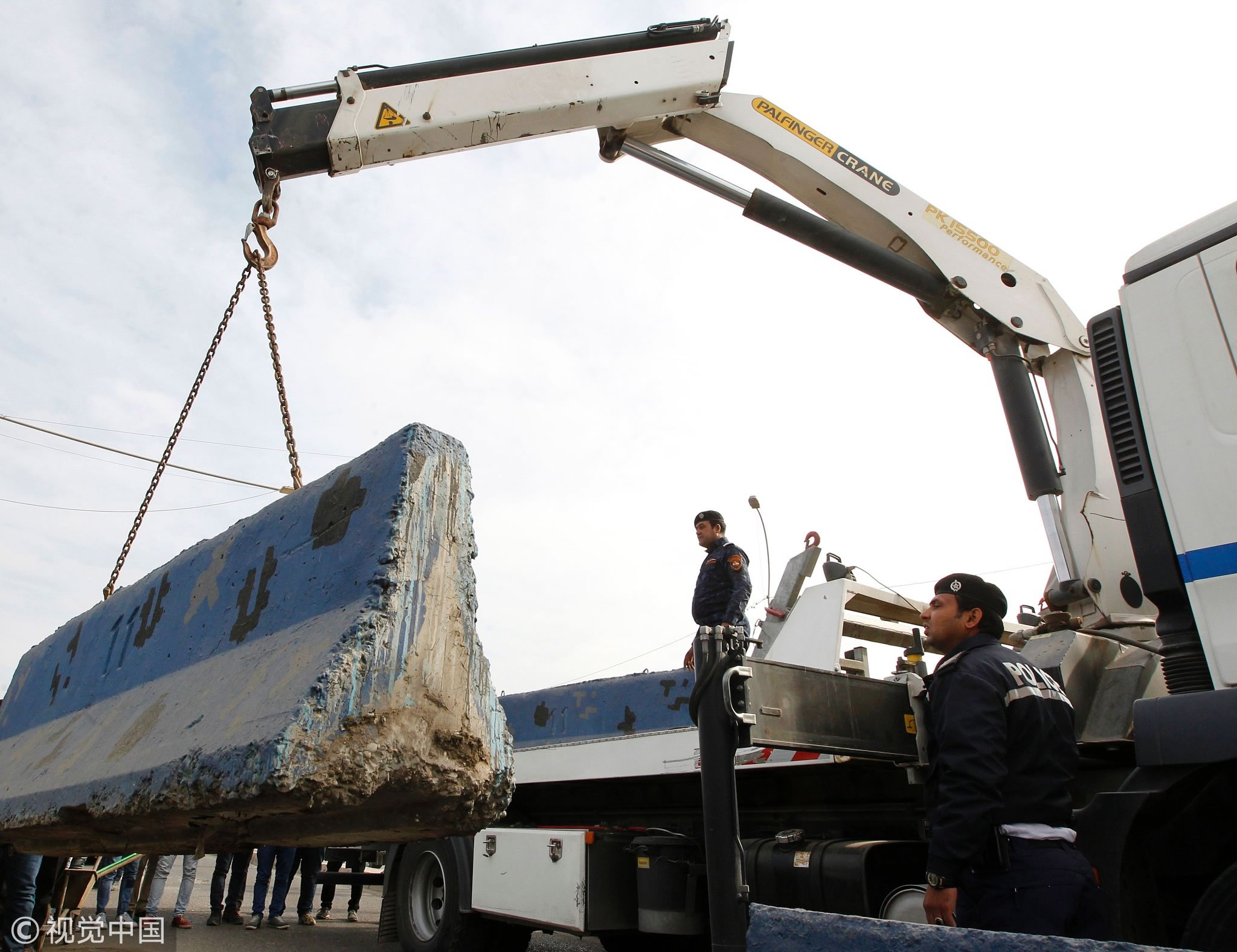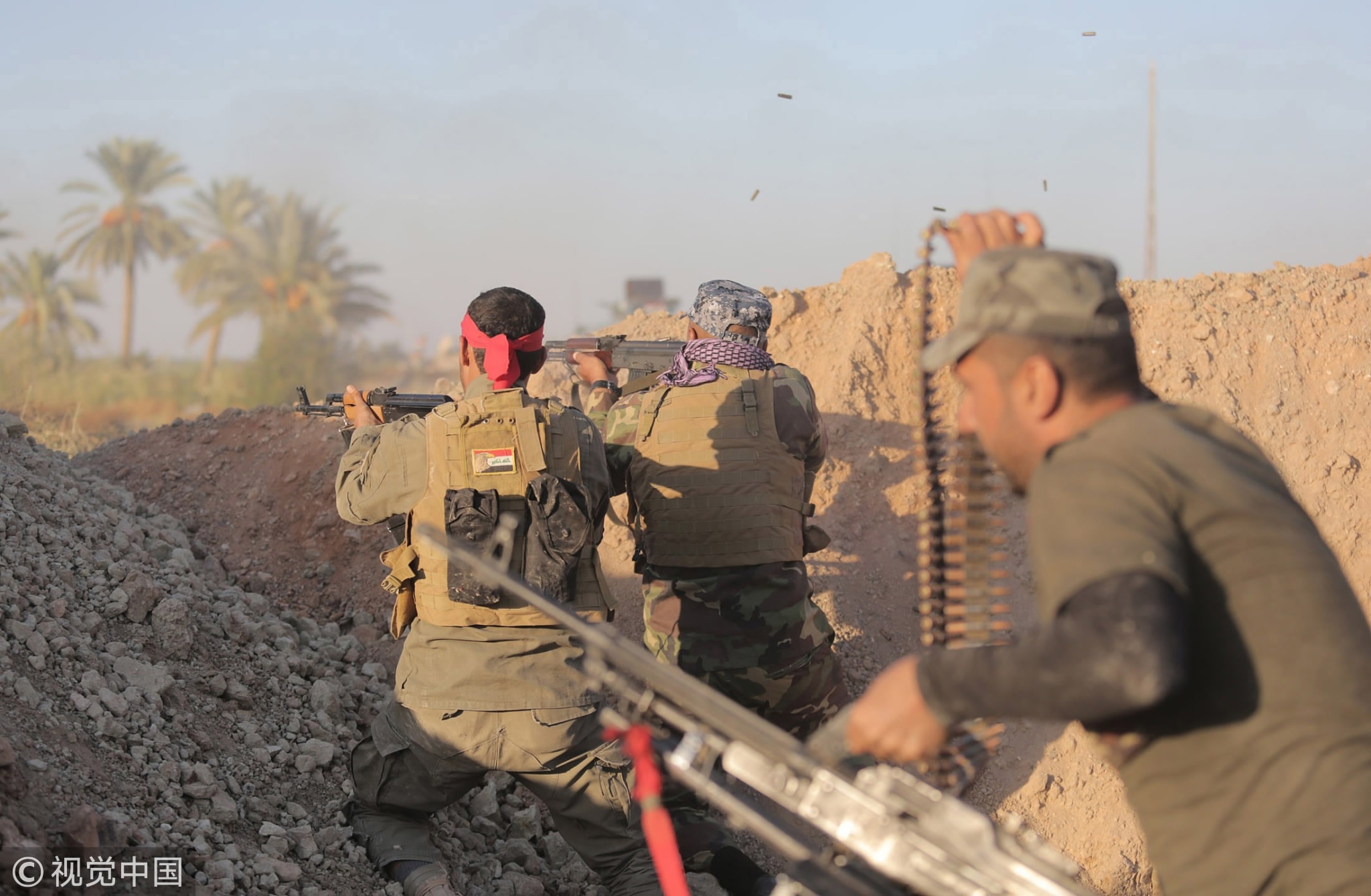
World
11:38, 09-Apr-2018
15 years after US invasion, Baghdad still struggling to rebuild
CGTN

On April 9, 2003, US forces entered Baghdad, putting an end to dictator Saddam Hussein’s 24-year rule. But far from bringing peace, the US invasion led to years of insurgency and the rise of ISIL, and in the Iraqi capital some now say life is worse than under Saddam.
Construction sites in the millennium-old capital have remained idle as if time stood still. For 15 years promises of rebuilding infrastructure in the second most populous Arab capital have fallen through and a multitude of projects have been shelved.
Baghdad's skyline is dotted with the desolate sights of rusting cranes, while roads and bridges are gutted with potholes and craters from lack of maintenance.

A picture taken on April 7, 2018, shows a general view of the Shorja market in central Baghdad. /VCG Photo
A picture taken on April 7, 2018, shows a general view of the Shorja market in central Baghdad. /VCG Photo
Even the emblematic Fardous Square, where a giant effigy of Saddam was symbolically pulled down with the help of US Marines at the time of the invasion, remains to be revamped. Infrastructure across Baghdad, a city of 900 square kilometers, is in dire need of repair.
"Industry, education, health, agriculture... everything is now worse than it was during Saddam's rule," said businessman Sadeq al-Shomari.
In 2004 and 2007, international conferences were organized to rebuild Iraq and donors pledged massive funds for projects that have never materialized. Some of the funds allocated to rebuilding Baghdad have disappeared, according to Transparency International, which ranks Iraq as the 12th most corrupt country in the world.
As Baghdad's infrastructure worsens, its population has swelled mainly due to an influx of people who fled conflict zones elsewhere in the country.

Iraqi policemen dismantle a security checkpoint on December 20, 2016 in Baghdad following a decision to reduce their number by more than 25 in order to ease traffic. /VCG Photo
Iraqi policemen dismantle a security checkpoint on December 20, 2016 in Baghdad following a decision to reduce their number by more than 25 in order to ease traffic. /VCG Photo
In 2003, the capital was home to 4.7 million but now the population of Baghdad is 7.2 million strong. During that same period the number of cars in the congested city grew from 250,000 to more than two million vehicles.
Roadblocks manned by security forces are still an obstacle course for motorists and pedestrians alike.
Meanwhile, daily power cuts plague the population who, in order to keep their refrigerators working and mobile phones charged, must rely on privately-owned generators.
Contributing to ISIL
Baghdad’s revival was also marred by a controversial US move after the US invasion.
One of the first decisions made by Paul Bremmer, the American head of the occupation authority, was to dismantle all security forces in the country.
This would come back to haunt US-led forces as it pushed many members of Iraq's disbanded military, police and intelligence agencies to join movements fighting against them.

Iraqi government forces and Shiite militias launch an operation against ISIL militants to take control of Jurf al-Sakhar south of Baghdad, Iraq on October 25, 2014. /VCG Photo
Iraqi government forces and Shiite militias launch an operation against ISIL militants to take control of Jurf al-Sakhar south of Baghdad, Iraq on October 25, 2014. /VCG Photo
One retired army commander said the tactics ISIL jihadists used – from the way they dug tunnels to their construction of defenses – were lifted straight from the manual of the old Iraqi armed forces under Saddam.
As ISIL stormed across Iraq and northern Syria in 2014, its leadership included veterans of Saddam's forces.
The government however also relied on officials from the previous government in its gruelling fight against ISIL and this – along with backing from a US-led coalition –ultimately gave Baghdad a key advantage that allowed it to take and declare victory over ISIL at the end of last year, experts say.
6301km
Source(s): AFP

SITEMAP
Copyright © 2018 CGTN. Beijing ICP prepared NO.16065310-3
Copyright © 2018 CGTN. Beijing ICP prepared NO.16065310-3